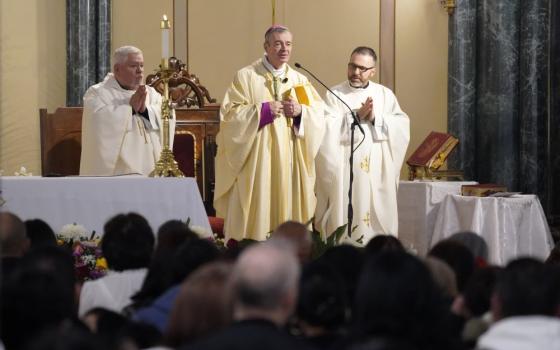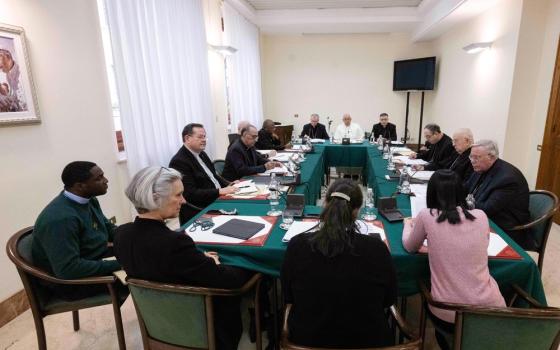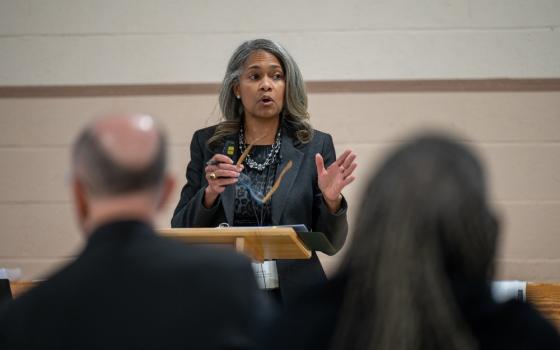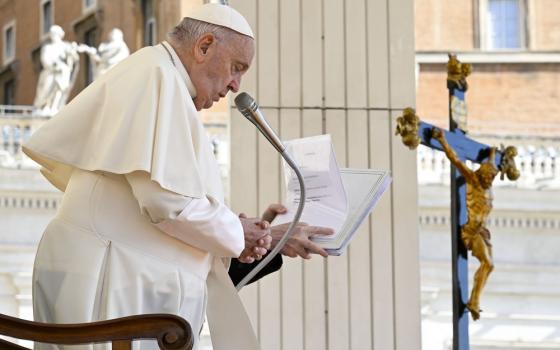
WASHINGTON -- A handful of dioceses and archdioceses across the country have announced plans to change or freeze pensions for lay employees, following a nationwide trend affecting state employees and workers for nonprofit groups and private corporations.
The Archdiocese of St. Paul and Minneapolis announced a change in its pension plan for lay employees, effective in January. The archdiocese, which had previously offered a defined benefit pension plan for its more than 6,800 lay employees and retirees, has switched to a defined contribution plan where employers contribute a determined amount to the employee's tax deferred annuity account.
The former benefit plan was frozen, meaning that as of Jan.31, workers' pensions would not continue to increase in value. Instead, the archdiocese will contribute an amount equal to 2.5 percent of an employee's salary to the employee's account.
John Bierbaum, the archdiocese's chief financial officer, told The Catholic Spirit, the archdiocesan newspaper, that the shift came about because of the market collapse and the fact that an increased number of lay employees with longer years of service at higher salaries required more pension funding.
He said the new plan was seen as the best option to preserve the pension plan and help employees continue to save for retirement.
"The move to a defined contribution plan is changing responsibility for retirement funds from employer to employee," Bierbaum said. "It sounds defensive, but we're not the only ones doing this."
The Diocese of Gary, Ind., and the Archdiocese of Boston are going to the same plan, he added.
Nationwide, state and local pension plans also have been at risk, operating under a deficit of at least $1 trillion, according to a 2010 report by the Pew Center on the States. Several states have scaled back their retirement plans by either curbing benefits given to new workers or raising the retirement age. Other states have boosted employee contributions or required workers to contribute more to health care plans.
In December, officials from the Archdiocese of St. Paul and Minneapolis began to inform employees of changes to the retirement package by conducting meetings at parishes and schools.
The Archdiocese of Boston has been holding similar meetings after announcing plans to freeze its pension plan for about 10,000 lay employees, with church officials there saying they hoped to stabilize the pension fund and make sure employees kept their benefits.
Although the pension fund was fully funded in 2007, it suffered during the economic downturn in 2008, according to information the archdiocese provided its employees.
The benefits of retired employees will not be affected and lay employees already in the plan will receive pension funds they have earned, but employees will not accrue additional benefits after the end of this year.
Starting next January, the archdiocese will offer retirees an alternative, a 401(k)-style plan, similar to what the Archdiocese of Minneapolis and St. Paul is providing.
Boston archdiocesan officials said the switch is similar to what many corporations have done -- replacing traditional pensions with "defined contribution'' plans, such as 401(k)s, where employees set aside part of their salary, often with an employer match, and control their own investments.
Charles Zech, an economics professor and director of the Center for the Study of Church Management at Villanova University near Philadelphia, described the pension plan as "the wave of the future'' for U.S. dioceses. He told the Boston Globe that many dioceses have already begun using this approach including the Detroit Archdiocese and the dioceses of Brooklyn, N.Y., Dallas and Phoenix.
Mary Jo Moran, executive director of the National Association of Church Personnel Administrators, based in Cincinnati, told Catholic News Service in December that the change in diocesan retirement packages "has nothing to do with economy" but is more in line with an overall trend that has been going on for some time and puts more responsibility on each employee to plan for their retirement.
"What's scary," she said, is that some people do not make good financial planning decisions.
Moran noted that as each diocese changes its retirement benefits package, it tends to offer a number of workshops to help employees adjust. She also noted many that religious institutions have already changed their retirement plans perhaps because so many of them also manage large health care systems with large numbers of employees.
In Moran's own archdiocese, Cincinnati, pensions were frozen at the end of this year. After Dec. 31, no additional compensation will determine an employee's pension. Future contributions will be made to a new 401(k) plan.
Richard Kelly, chief financial officer and treasurer of the Cincinnati Archdiocese, said a positive aspect of the change is that employees' accounts are portable and do not require a long vesting period. Also employees can add their own funds to the account and choose their investment options.
Echoing what officials from other dioceses have said, he described the pension change as a way to make sure the retirement benefits can continue. He also told The Catholic Telegraph, Cincinnati's archdiocesan newspaper, that the change was "unrelated to claims or settlements for abuse claims" against the archdiocese.
Those concerns are currently being raised in the Diocese of Wilmington, Del., and the Archdiocese of Milwaukee, which recently declared bankruptcy as a result of settling abuse claims. In response to reports of an underfunded pension plan in the Milwaukee Archdiocese, church officials there released a statement Jan. 21 saying the underfunding was "no current cause for concern for our employees."
The archdiocese attributed the decrease in pension funds to "poor investment experience." It said the experience was affecting "defined benefit pension funds across the nation" in the long term but "does not affect any of our employees in the near term."
John Marek, the archdiocese's chief financial officer, told the Catholic Herald, Milwaukee's archdiocesan newspaper, that pension plans should not be at risk because of how they are structured.
"The pension plan is a multiple employer pension plan," he said. "It's not an archdiocesan asset. It has assets that were contributed by well over 300 different employers. The archdiocese does not own that money; the archdiocese has an administrative role."
In the Diocese of Wilmington, a group of lay employees filed suit in early January against the diocese seeking to protect their pensions during the diocesan bankruptcy reorganization.
The Dialog, Wilmington's diocesan newspaper, reported that under the settlement plan, the lay workers' pension is to receive an additional $5 million from the diocese's bankruptcy estate. The diocese also will increase its annual contributions to the pension trust from about $1 million to $2 million.
"This infusion of assets will enable the pension plan to meet its obligations," the diocese said.
[Contributing to this story was Brian T. Olszewski in Milwaukee and Joseph Ryan in Wilmington, Del.]



